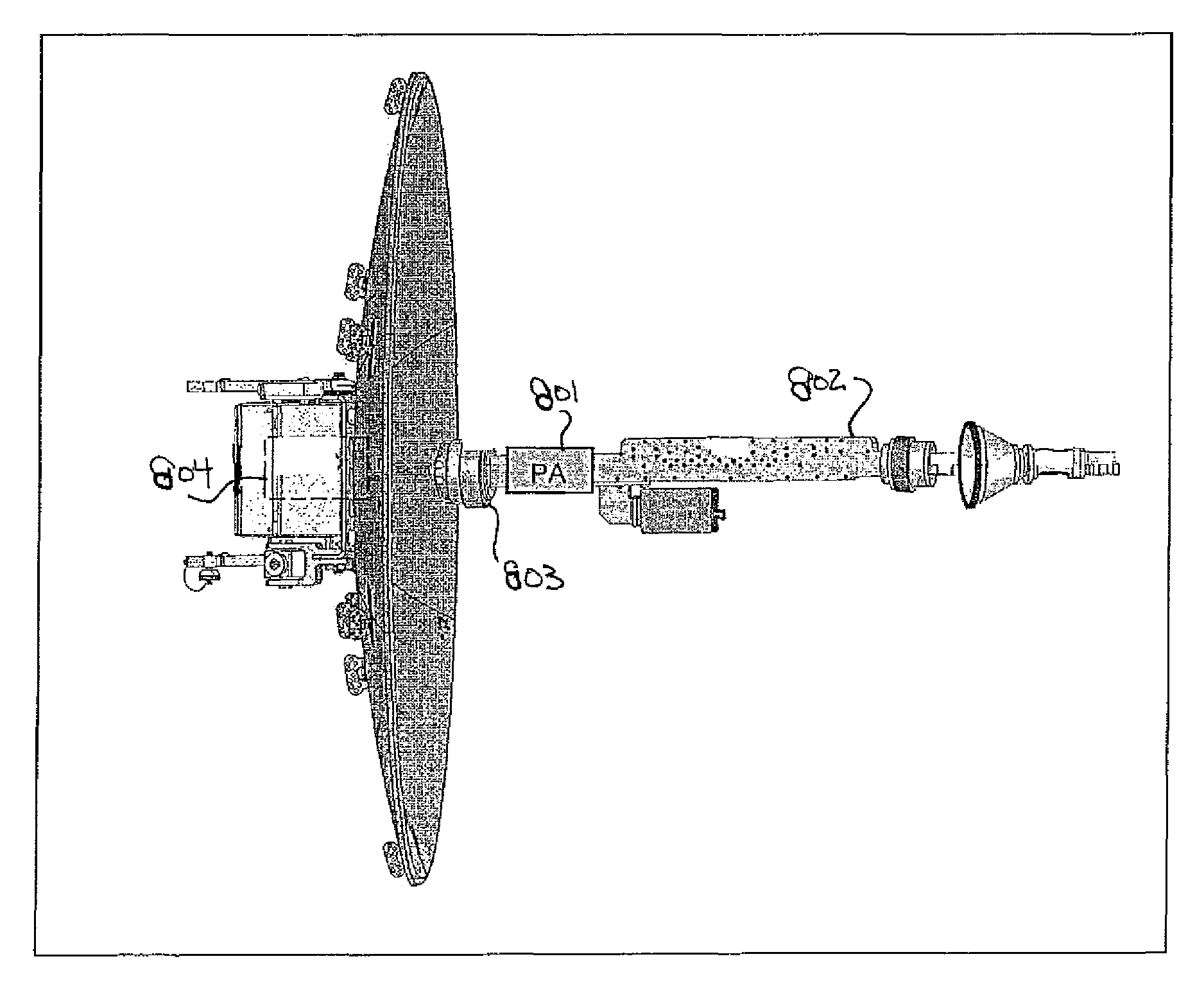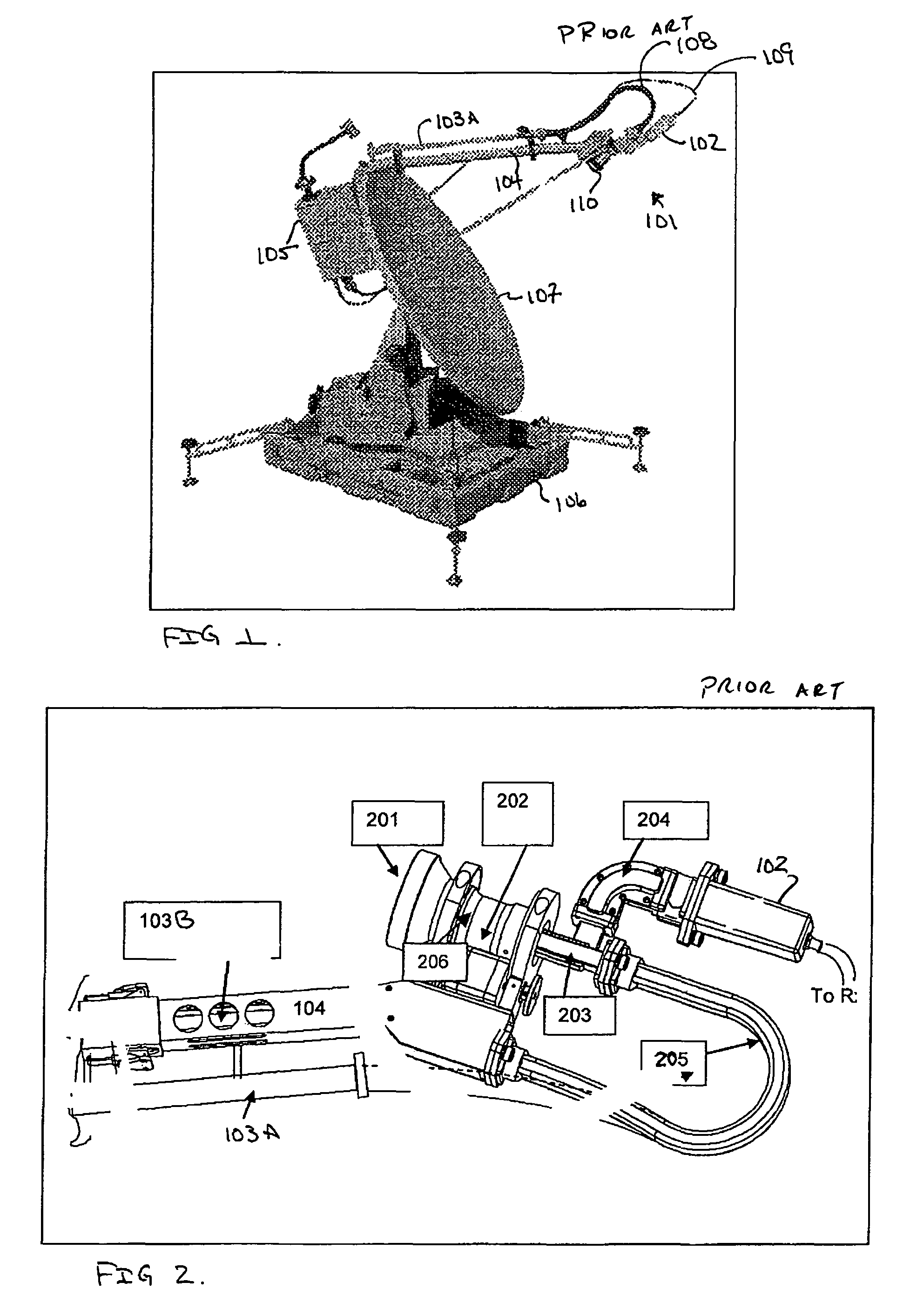Compact antenna feed assembly and support arm with integrated waveguide
a technology of support arm and antenna, which is applied in the direction of antennas, waveguide horns, electrical devices, etc., can solve the problems of large filtering area, large noise, and interference with the performance of the receiver
- Summary
- Abstract
- Description
- Claims
- Application Information
AI Technical Summary
Benefits of technology
Problems solved by technology
Method used
Image
Examples
Embodiment Construction
[0028]FIG. 4 shows a polarizer 401 acting as a waveguide integrator (WGI), which WGI serves the function of integrating at least two waveform pathways into a single structure, as described herein. A WGI is defined as any structure, modification, or device that performs this integration function. In this embodiment the WGI is a modified septum polarizer that integrates transmit and receive pathways to and from a feed horn 402. At its distal end 401A, the septum polarizer is attached to and in communication with the feed horn. At its proximal end 401B, the septum polarizer has two ports 403, 404, which are arranged in parallel, in contrast to the typical prior art arrangement of having the ports mutually opposed and linear, as shown in FIG. 3. The two parallel ports of FIG. 4 form a square-profile interface equipped with a square flange 405 that allows each of the ports to communicate with one of the two waveguides (not shown) that are integrated into a single structure such as a wave...
PUM
 Login to View More
Login to View More Abstract
Description
Claims
Application Information
 Login to View More
Login to View More - R&D
- Intellectual Property
- Life Sciences
- Materials
- Tech Scout
- Unparalleled Data Quality
- Higher Quality Content
- 60% Fewer Hallucinations
Browse by: Latest US Patents, China's latest patents, Technical Efficacy Thesaurus, Application Domain, Technology Topic, Popular Technical Reports.
© 2025 PatSnap. All rights reserved.Legal|Privacy policy|Modern Slavery Act Transparency Statement|Sitemap|About US| Contact US: help@patsnap.com



